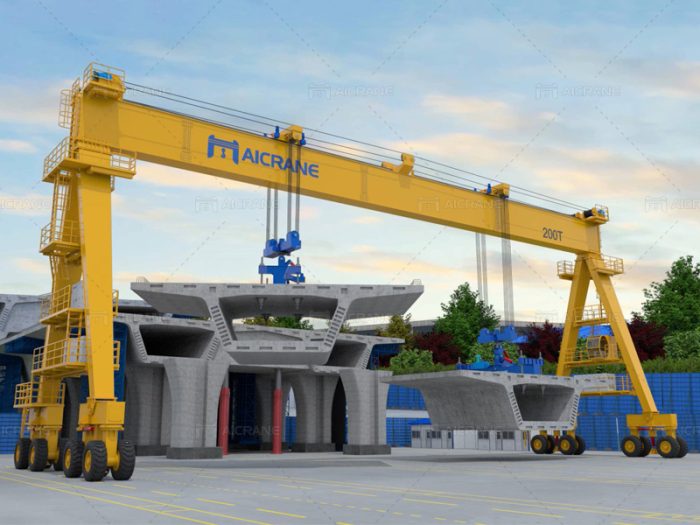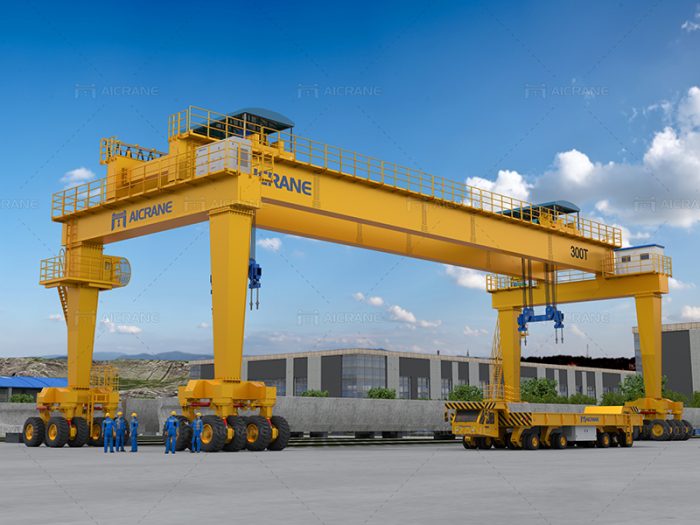Straddle carrier cranes play a pivotal role in the bustling world of maritime logistics, ensuring the seamless movement and stacking of containers in ports and container terminals. To uphold their efficiency and reliability, a robust maintenance regimen is essential. This article explores the intricacies of how maintenance is typically handled for straddle carrier cranes, delving into routine checks, preventive measures, and the role of technology in ensuring these giants of container handling remain in optimal condition.

Routine Inspections:
One of the cornerstones of straddle carrier maintenance is routine inspections. Regular checks are conducted to identify any signs of wear and tear, potential issues, or components nearing the end of their lifecycle. These inspections cover a broad spectrum, including structural elements, hydraulic systems, electrical components, and safety features.
Structural Inspections:
The structural integrity of a straddle carrier crane is paramount for its safe and efficient operation. Inspections focus on checking the frame, legs, and chassis for any signs of corrosion, cracks, or deformation. Welded joints and connections are scrutinized to ensure they meet the required standards.
Hydraulic System Checks:
The hydraulic system is the powerhouse of a straddle carrier, responsible for lifting and moving heavy containers. Routine checks involve examining hydraulic hoses, seals, and cylinders for leaks, wear, or damage. Hydraulic fluid levels are monitored, and the quality of the fluid is assessed to ensure optimal performance.
Electrical Component Evaluations:
Straddle carriers rely on a sophisticated array of electrical components, including sensors, controllers, and motors. Maintenance personnel inspect these elements for loose connections, damaged wiring, and the overall functionality of the control systems. Regular calibration may be necessary to maintain precision in container handling operations.
Preventive Maintenance:
In addition to routine inspections, preventive maintenance measures are employed to address potential issues before they escalate. This proactive approach aims to minimize downtime, enhance equipment lifespan, and optimize operational efficiency.
Lubrication:
Proper lubrication is fundamental to prevent friction-induced wear and tear. Lubrication schedules are established, and high-stress points such as pivot joints, gears, and bearings are regularly greased. This not only reduces mechanical stress but also contributes to smoother and more efficient crane movements.
Component Replacements:
Certain components, such as filters, belts, and brake pads, have a finite lifespan. Preventive maintenance involves replacing these components at scheduled intervals, even if they appear to be functioning correctly. This preemptive action helps avoid unexpected failures that could lead to costly repairs or operational disruptions.
Alignment and Calibration:
Straddle carriers operate in demanding environments, and over time, alignment issues may arise. Regular checks and adjustments to ensure proper wheel alignment and crane leveling are crucial. Calibration of sensors and control systems is also performed to maintain precision in container positioning and lifting operations.

Advanced Technologies in Maintenance:
The landscape of straddle carrier crane maintenance has evolved with the integration of advanced technologies. These innovations contribute to more efficient monitoring, diagnostics, and predictive maintenance strategies.
Condition Monitoring Systems:
Modern straddle carriers often come equipped with condition monitoring systems that continuously assess the health of critical components. These systems use sensors to detect anomalies, providing real-time data to maintenance teams. This proactive approach allows for timely intervention before minor issues escalate.
Telematics and Remote Monitoring:
Telematics enable remote monitoring of straddle crane performance. Data on equipment utilization, fuel consumption, and error codes can be accessed remotely, allowing maintenance teams to make informed decisions without being physically present at the crane site. This not only streamlines maintenance processes but also contributes to overall operational efficiency.
Predictive Maintenance Algorithms:
Predictive maintenance leverages data analytics and machine learning algorithms to forecast when maintenance is most likely to be required. By analyzing historical data and real-time performance metrics, these algorithms can predict component failures, enabling proactive maintenance interventions and minimizing unplanned downtime.
Safety Considerations:
In the realm of straddle carrier crane maintenance, safety is of paramount importance. Maintenance tasks are performed in accordance with strict safety protocols, and personnel undergo comprehensive training to handle the complexities of these massive machines safely.
Lockout/Tagout Procedures:
Before any maintenance work begins, lockout/tagout procedures are followed to ensure that the crane is de-energized and cannot be accidentally started. This critical safety measure prevents unauthorized or accidental activation of the crane during maintenance activities.
Operator Training:
Maintenance tasks often require collaboration between maintenance personnel and crane operators. Proper communication and coordination are emphasized, and operators are trained to assist maintenance teams in tasks such as securing the crane and providing access to components in a safe manner.
Conclusion:
Maintaining straddle carrier cranes is a multifaceted endeavor that blends traditional practices with cutting-edge technologies. Routine inspections, preventive maintenance measures, and the integration of advanced monitoring systems collectively contribute to the reliability, longevity, and operational efficiency of these vital components of the global supply chain. As technology continues to advance, the landscape of straddle carrier crane maintenance will likely evolve further, ensuring that these giants of maritime logistics continue to navigate the seas of commerce with precision and reliability. To learn more, visit https://steelmillcranes.com/
